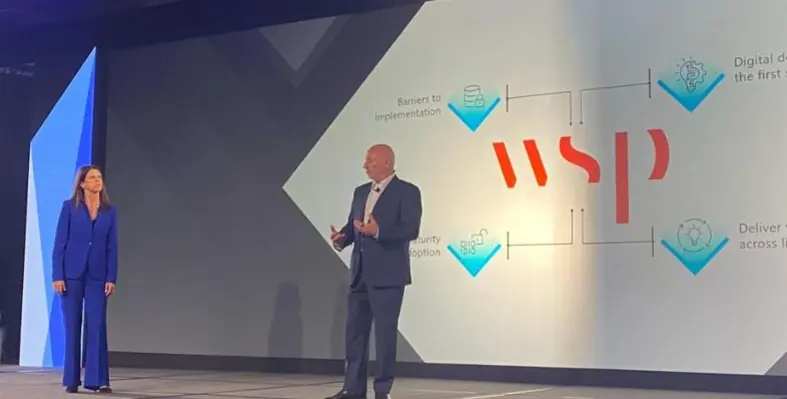At the Year In Infrastructure awards hosted by Bentley Systems, a panel session looked at how data could be leveraged for infrastructure intelligence
The panel was presented by speakers from Bentley Systems. Present at the session were Mike Campbell, chief product officer, Julien Moutte, chief technology officer, Henry Okraglik, global director digital for WSP Australia, Lori Hufford, vice president for engineering collaboration, and Sussane Trierscheid, vice president for modelling and facilities engineering.
During the discussion, the panellists looked at how digital twins could help Bentley Systems transform the Bentley infrastructure cloud into an intelligent infrastructure system.
“Infrastructure intelligence can be vital for bridging the talent and skills gap that we've talked about, for meeting sustainable development goals and to accommodate our growing population. Basically, overcoming whatever challenges tomorrow brings,” said Mike Campbell, the company’s chief product officer.
“This year is great to share with you that 64% of finalists credited iTwin [Bentley’s digital twin technology] with driving unprecedented productivity gains,” he added.
Henry Okraglik, global director digital for WSP Australia, and Lori Hufford, vice president for engineering collaboration at Bentley Systems, explained why data centricity and data mobility is important for any company’s digital strategy.
“I think most of you would understand that the process includes change management, and also to improve our digital maturity in digital adoption across those areas. We also need to make sure digital design or engineering is the very first step in reducing rework on projects that should be digital from the very start,” said Okraglik.
“For engineering services firms, these solutions accelerate the creation of new offerings beyond handle and into operations. These solutions enable these firms to add their proprietary assets specific analytics and domain expertise to make these solutions fit for purpose. In doing so, these solutions lower the barrier for those engineering firms to become digital integrators. For the asset owners, the solutions bring together data from operational engineering and information technologies to the full context of the infrastructure digital twins. For both those audiences, engineering firms and asset owners, these new solutions help them more quickly realise the value of infrastructure digital twins,” concluded Campbell.





